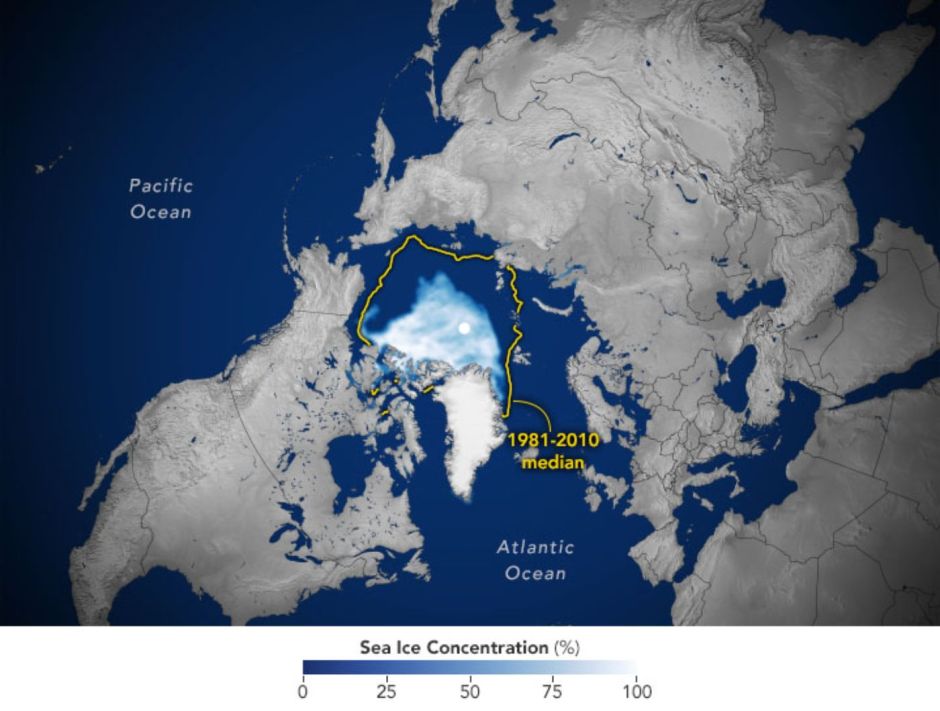Arctic sea ice reaches its second smallest area on record | The NY Journal
[ad_1]

Sea ice continues to reduce its area in the Arctic.
Photo:
Joshua Stevens / Earth Observatory / NASA / Courtesy
He National Snow and Ice Data Center (NSIDC) announced that Arctic sea ice appeared to have reached its second annual minimum area on September 15, 2020, surpassed only by a previously measured minimum area in 2012.
At 1.44 million square miles (3.74 million square kilometers), this minimum was only surpassed by the record minimum area observed on September 17, 2012.
The 2020 figure is preliminary because a summer heat surge at the end of the season could further reduce the spread, but it shows that the observed trend of long-term decline in Arctic sea ice continued.

2020 and 2012 remain the only years in which the extent of sea ice has fallen below 4.0 million square kilometers (1.54 million square miles).
“This year’s low is the unsurprising result of a continued long-term decline in Arctic sea ice,” said Alek Petty, a sea ice scientist at NASA’s Goddard Space Flight Center.
The 14 minor ice surfaces recorded have occurred in the last 14 years.
Why did so much sea ice melt
Numerous factors combined to reduce sea ice so much in 2020.
In spring, A heat wave in Siberia set the stage for a quick meltdown early in the season.
Furthermore, the sea ice was already much thinner entering the 2020 thaw season than in previous years, the cumulative result of the overall long-term decline in the extent of sea ice in summer.
And scientists believe that hot water could work its way under the ice and melt it from below.
Climate can also affect the amount of ice in the Arctic.
From late July to early August, scientists observed a system of low atmospheric pressure rotating over the Arctic Ocean and they wondered how it would affect the ice. A similar storm in 2012 was one of the main causes of the lowest sea ice minimum on record. “The summer 2020 storm definitely had an effect, but it didn’t seem enough to cause really significant ice loss to drive a new all-time low,” Petty said.
From the start of the satellite registration, the extent of sea ice has steadily decreased, a trend that is observed in all seasons, but that is especially pronounced in the time of the summer minimum.
.
[ad_2]
Source link


